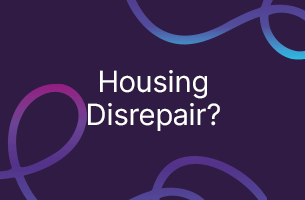Posted by Nick Henderson, director of course development at Legal Futures Associate VinciWorks

Henderson: assessing whether slavery or human trafficking is occurring is difficult
Solicitors working with any large commercial organisation, either in-house or externally, need to know about section 54 of the Modern Slavery Act – indeed, the Law Society has recently published a practice note on it.
Section 54 imposes a legal requirement on any commercial organisation with an annual turnover of £36m or above and that carries on any part of their businesses in the UK to publish a slavery and human trafficking statement, and solicitors must be ready to advise their clients accordingly. Law firms themselves have to produce a statement on their own supply chain if they are above the threshold.
The statement requires insight from the business around the risks of modern slavery in their supply chain, and the steps that are being taken to address those risks. Solicitors may need to co-ordinate with the business to gather relevant information, and where they don’t have access directly, may need to co-ordinate with different parts of the business and implement necessary due diligence to be confident that modern slavery does not exist in the supply chain.
There are also ‘soft law’ principles of business and human rights at play in regards to steps businesses should be taking to go beyond basic compliance with section 54 and apply specific actions that eliminate modern slavery from the supply chain.
The impetus of the Act is to give businesses an opportunity to create better policies and processes to remove modern slavery from the supply chain and prevent it happening in the first place. Solicitors should have an understanding of what those policies might look like in order to properly advise their clients on the steps that they should be taking.
A solicitor advising a commercial operation on its requirements under section 54 will require substantial input from the organisation itself, as well as from the suppliers and subcontractors that make up the supply chain.
While the Act does not specify the layout or content of the statement, there is some guidance on what it should include. Any reporting on policies such as corporate social responsibility, ethical trading activities, or relevant information in strategic statements or annual reports, may be a good starting point for a company unsure of what to report on.
The Act does list six areas a statement should cover:
- Structure and operations of the business;
- Any policies relevant to slavery and human trafficking;
- Due diligence processes in relation to slavery and human trafficking in the supply chain;
- Where there is a risk in the supply chain and steps that have been taken to address them;
- Effectiveness of the approaches, such as KPIs specific to slavery and human trafficking; and
- Training for staff and others in the supply chain.
Assessing whether slavery or human trafficking is occurring is difficult. It will often be purposefully hidden, and certain indicative practices such as long hours or withholding pay may on their own not add up to modern slavery.
Commercial organisations have a responsibility to ensure workers are not being exploited and that all relevant employment, health and safety, human rights and international standards are adhered to. Solicitors need to be aware of the legal duty to drive out bad labour practices and the moral duty to improve labour rights throughout the supply chain.
Solicitors can advise their clients to map out their supply chains and identify the suppliers by tiers. First tier would be a direct supplier, second tier ones that supply them, and so forth. A wider range of stakeholders such as labour organisations, human rights experts, and NGOs can be effectively engaged to identify potential slavery risks at the tiers of the supply chain and take action to address them.
The next step is to consider how to address the risks once they have been identified. Not every risk can be addressed immediately, so they should be prioritised taking into account the influence that the business at each tier.
Businesses are also encouraged to co-operate with peers to develop solutions, such as a group of companies importing the same high-risk product from a country with high levels of exploitation to work together to improve labour practices.
Where a company has found it caused or contributed to human rights abuses, then timely and effective remedy to the people affected should occur. Reparations and working to improve practices is generally preferable to simply terminating a contract.
Internal procedures, such as whistleblowing policies, anti-bribery and anti-corruption procedures, and in particular staff training to identify risks, is crucial advice for any company that is required to produce a slavery and human trafficking statement.
Compliance doesn’t have to be complicated. Companies can add modern slavery reporting requirements to their risk register or report on KPIs in the risk management system.
Modern slavery and human trafficking can take various forms, depending on the nature of the organisation, what it does, how it conducts its business, how it makes its decisions, and the jurisdictions in which it operates. The focus on supply chains is designed to help businesses thoroughly investigate their supply chains for labour exploitation.
Solicitors have their part to play too, but they don’t have to do it alone.
VinciWorks offers a suite of modern slavery and human trafficking training materials, courses and tools.












Leave a Comment